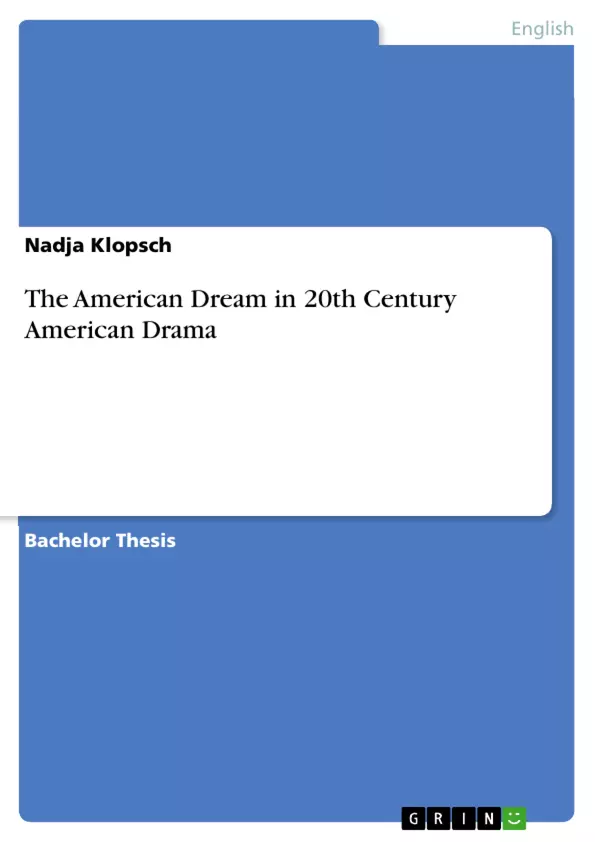1. Introduction
Every year thousands of people from all over the world migrate to the United States of America. For most people escaping war, poverty, ecological destruction and other dangers, the United States constitute a safe harbor where their hopes of a better life come true. Ever since the settling of what is today the US, people came to live in the New World and to lead a better life than in their countries of origin. The hopes connected with this better and happier live are all joined in the concept of the “American Dream”, which became one of most powerful creation myths of a country.
People migrating to the United States have certain dreams or hopes of a better life but in reality these promises often turn out to be not as strong as people originally believed them to be. Only a very small amount of people achieve the famous idea of “rising from rags to riches” whereas many people fail to attain their goal of a better life. Hence it is not surprising that the American culture not only is shaped by the glorious American Dream but also by the grim truth of its failing or being flunked.
Of course, such an important concept deeply influences American culture. Continuously the ideas of the American Dream can be found in television, movies, literature, and arts for instance in F. Scott Fitzgerald’s The Great Gatsby or Gabriele Muccino’s film The Pursuit of Happiness.
This paper aims to examine the presentment and importance of the American Dream for twentieth century American drama. Drama in general was selected because of its importance as one of the three main literary genres. Temporal narrowing in form of 20th century was chosen because drama as a literary genre is characterized by experimentation with form and content in this period. Furthermore, some of the best known 20th century American dramas employ the American Dream as a central theme, for example Susan Glaspell’s Trifles (1916), Arthur Miller’s Death of a Salesman (1949), Lorraine Hansberry’s A Raisin in the Sun (1959) and Edward Albee successive plays The Sandbox (1959) and The American Dream (1960).
At first, a closer look is taken at what the American Dream actually is. Afterwards some constituents of the overall American Dream are distinguished and their prominence in some of most popularly known dramas of twentieth century American literature is extracted.



